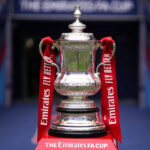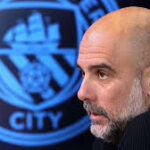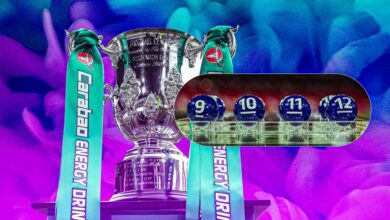FIFA forced into last minute change ahead of Club World Cup amid major embarrassment fears

The world of football is witnessing a historic moment as FIFA’s ambitious 32-team Club World Cup prepares to kick off, but the inaugural tournament is already facing significant challenges that threaten to overshadow what was intended to be a groundbreaking celebration of global club football. From disappointing ticket sales to controversial trophy engravings, the competition has become a source of considerable debate within the football community.
The Revolutionary Format and Its Grand Ambitions
The revamped FIFA Club World Cup represents a dramatic departure from the traditional seven-team format that football fans have known for decades. This new iteration features an unprecedented 32 teams from across the globe, creating what FIFA president Gianni Infantino has described as “the pinnacle of all club competitions.” The geographical distribution reflects FIFA’s commitment to global representation, with 12 teams from Europe, six from South America, five from North and Central America, four each from Asia and Africa, and one from Oceania.
The tournament’s structure mirrors that of the FIFA World Cup, with group stages leading to knockout rounds, culminating in a final that will crown the first-ever winner of this expanded format. The competition is scheduled to take place across multiple venues in the United States, utilizing some of the country’s most prestigious stadiums, including NFL facilities with capacities exceeding 65,000 spectators.
The opening match, featuring Lionel Messi’s Inter Miami against Egypt’s Al Ahly at the Hard Rock Stadium, was strategically chosen to maximize global appeal. The presence of arguably the greatest player of all time was expected to generate enormous interest and serve as the perfect launchpad for FIFA’s ambitious project.
Star-Studded Lineup Fails to Generate Expected Buzz
Despite boasting an impressive roster of participating clubs, the tournament has struggled to capture the imagination of football fans worldwide. The competition features some of the most prestigious names in world football, including European giants Real Madrid, Bayern Munich, Manchester City, Paris Saint-Germain, Inter Milan, Atletico Madrid, Chelsea, Borussia Dortmund, Porto, and Juventus.
South American powerhouses Flamengo, River Plate, and Boca Juniors add their rich footballing heritage to the mix, while teams from other continents bring their unique styles and passionate fan bases. The diversity of playing styles, tactical approaches, and football cultures represented in the tournament should theoretically create a fascinating spectacle for neutral observers and dedicated fans alike.
However, the reality has been far different from FIFA’s expectations. The buzz surrounding the tournament has been notably underwhelming, with many fans expressing skepticism about the competition’s necessity and its potential impact on the already congested football calendar. Critics have questioned whether the world needed another tournament, particularly one that adds further strain to players who are already competing in domestic leagues, continental competitions, and international fixtures.
Ticket Sales Crisis Exposes Fundamental Issues
Perhaps the most visible manifestation of the tournament’s struggles has been the significant challenges in ticket sales. Despite the presence of global superstars like Lionel Messi and world-renowned clubs, demand for tickets has fallen far short of expectations. The situation became particularly embarrassing when students at Miami Dade College were able to purchase five tickets for the opening match for just $20 each – a staggering reduction from the original price of $349 for the cheapest available seats when they first went on sale in December.
This dramatic price reduction highlights the disconnect between FIFA’s commercial expectations and actual consumer demand. The Hard Rock Stadium, home to the Miami Dolphins, has a capacity of 65,326, but early indications suggested that filling even a fraction of those seats would prove challenging without significant interventions.
The ticket sales struggles extend beyond the opening match. Analysis of seat maps for various fixtures throughout the tournament reveals a patchwork of sold and unsold sections, with some areas showing strong sales while others remain largely empty. A last-16 clash at the 74,867-capacity Bank of America Stadium in Charlotte, North Carolina, exemplifies this uneven demand pattern, with certain sections selling well while others struggle to attract buyers.
FIFA’s Damage Control Measures
Faced with the prospect of embarrassingly empty stadiums being broadcast to a global audience, FIFA has implemented several last-minute measures to mitigate the visual impact of poor attendance. According to reports, the organization has begun moving fans to different seats to create the appearance of fuller stadiums for television broadcasts. This practice, while described by FIFA as common at major events, represents a clear acknowledgment of the attendance challenges facing the tournament.
FIFA has been careful to emphasize that no supporters will end up in seats that are of lower quality than what they originally paid for, attempting to address potential concerns about the seat reassignment process. However, the very need for such measures underscores the significant gap between expectations and reality regarding public interest in the competition.
Some fans have received partial refunds after discovering they paid premium prices through official club allocations when tickets initially went on sale, only to see the same seats available later at significantly reduced prices. This situation has created additional frustration among early supporters who showed faith in the tournament by purchasing tickets at launch.
Broadcasting Deal and Commercial Implications
The tournament’s commercial significance cannot be understated, with streaming service DAZN having signed a massive $1 billion deal for the broadcasting rights. This investment represents a significant financial commitment and demonstrates the high stakes involved in the tournament’s success or failure. The broadcasting deal adds pressure on FIFA to deliver a product that justifies such a substantial investment from their media partners.
The reliance on a streaming platform rather than traditional television networks reflects the evolving media landscape in sports broadcasting. However, it also means that the tournament’s reach may be more limited than if it were available on free-to-air television or established sports networks, potentially contributing to the lack of widespread awareness and interest among casual football fans.
Venue Selection Controversy
Internal tensions within FIFA regarding venue selection have also emerged as a significant issue. According to detailed reporting, FIFA’s United States-based staff advocated for a more strategic approach to stadium selection, particularly favoring MLS venues with smaller capacities for fixtures involving lesser-known teams. This approach was seen as a way to optimize revenue while avoiding the embarrassment of sparsely populated massive stadiums.
However, FIFA’s European office, led by president Gianni Infantino, disagreed with this conservative approach. The final decision resulted in eight of the twelve chosen stadiums having capacities exceeding 65,000, with only twelve of the tournament’s 64 fixtures scheduled to take place at smaller MLS grounds. This decision now appears to have backfired, as the larger venues struggle to attract sufficient attendance to create an impressive visual spectacle.
The venue selection debate highlights broader philosophical differences within FIFA about how to balance ambition with practicality. While the larger stadiums certainly provide a more impressive backdrop when full, they also create a much greater risk of looking empty and generating negative publicity when attendance falls short of expectations.
The Trophy Controversy
Adding to the tournament’s controversies is the design and inscription of the tournament trophy itself. Created by prestigious jewelers Tiffany & Co., the gold-plated trophy features a distinctive circular design with multiple spinning layers, representing FIFA’s attempt to create an iconic symbol for the competition.
However, fans and critics have been astonished to discover that FIFA president Gianni Infantino’s name has been engraved on the trophy not once, but twice. The first inscription reads “Founding president, Gianni Infantino,” followed by his signature. The second, more elaborate inscription states: “We are witness to a new age. The golden era of club football: the era of the FIFA Club World Cup. The pinnacle of all club competitions. Inspired by the FIFA president Gianni Infantino.”
This unprecedented level of self-aggrandizement has drawn significant criticism from football fans and commentators worldwide. Social media reactions have been particularly harsh, with fans expressing disbelief at what they perceive as an egotistical display. Comments range from suggestions that Infantino might end up lifting the trophy himself alongside the winning team to calls for his removal from office.
The trophy controversy has inadvertently overshadowed discussions about the actual competition, with many fans focusing more on the inscriptions than on the participating teams or the tournament format. This represents another public relations challenge for FIFA as they attempt to establish the credibility and prestige of their new tournament.
Prize Money and Financial Incentives
Despite the various controversies, FIFA has committed significant financial resources to ensure the tournament’s success. The overall winner will receive £93.5 million in prize money, representing one of the largest payouts in club football history. This substantial financial incentive is designed to ensure that participating clubs take the competition seriously and field their strongest possible teams.
The prize money structure extends beyond just the winner, with significant payments available to teams that progress through various stages of the tournament. This financial commitment demonstrates FIFA’s serious intent to establish the Club World Cup as a premier competition that clubs will prioritize alongside their domestic and continental obligations.
Managerial Perspectives and Player Reactions
The tournament has received mixed reactions from managers and players at participating clubs. Manchester City manager Pep Guardiola has expressed cautious optimism about the competition, noting the opportunity to face different styles of play and experience various football cultures. His comments reflect a pragmatic approach to the tournament, acknowledging both its potential benefits and the challenges it presents.
Guardiola emphasized the importance of taking the competition “one step at a time” and not making premature assumptions about outcomes. His measured response contrasts with some of the more critical voices in football who have questioned the tournament’s place in an already crowded fixture list.
The reaction from players has been similarly mixed, with some expressing excitement about the opportunity to compete against teams they would rarely face otherwise, while others have voiced concerns about the additional physical and mental demands placed on athletes who are already stretched thin across multiple competitions.
Long-term Implications for FIFA and Club Football
The success or failure of this inaugural 32-team Club World Cup will have significant implications for the future of international club football. FIFA has invested considerable political and financial capital in the tournament, and its reception will likely influence decisions about the competition’s future format and frequency.
If the tournament succeeds in capturing global imagination and proving commercially viable, it could become a regular fixture in the football calendar, potentially expanding further or inspiring additional innovations in international club competition. However, if it fails to generate sustainable interest and attendance, it may force FIFA to reconsider its approach to club football and focus resources on other initiatives.
The tournament also represents a test case for football’s global expansion and the appetite for new competitions in an increasingly saturated market. The results will provide valuable insights into fan preferences, commercial viability, and the practical challenges of organizing large-scale international tournaments.
Conclusion: A Tournament at a Crossroads
As the inaugural 32-team FIFA Club World Cup prepares to begin, it finds itself at a critical juncture. The combination of poor ticket sales, controversial trophy engravings, and mixed reception from the football community has created a challenging environment for what was intended to be a triumphant celebration of global club football.
The tournament’s ultimate success will be measured not just by the quality of football on display, but by its ability to capture the imagination of fans worldwide and establish itself as a meaningful addition to the football calendar. With significant financial investments at stake and FIFA’s reputation on the line, the coming weeks will prove crucial in determining whether this ambitious project can overcome its early challenges and fulfill its grand ambitions.
The participating clubs, despite the controversies surrounding the tournament organization, represent the pinnacle of their respective continents and promise to deliver high-quality football that could help the competition find its footing. Whether this proves sufficient to overcome the various challenges and criticisms remains to be seen, but the inaugural Club World Cup will undoubtedly be remembered as a pivotal moment in the evolution of international club football, regardless of its ultimate success or failure.















